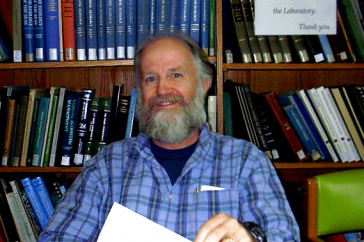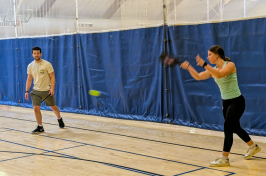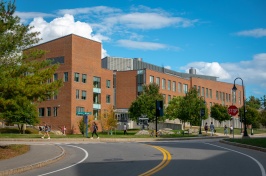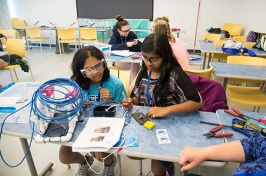UNH Researchers Work to Restore River Herring

Fred Short, professor of natural resources and the environment at the University of New Hampshire and a leading expert in seagrass conservation and restoration worldwide, has received the Lifetime Achievement Environmental Merit Award from the Environmental Protection Agency (EPA) New England region.
DURHAM, N.H. -- University of New Hampshire fisheries researchers Jamie Cournane and Christopher Glass have received a grant from the National Fish and Wildlife Foundation under its Fisheries Innovation Fund to develop a state-of-the-art fisheries stock assessment model and conduct workshops with fishermen to help restore the depleted East Coast population of river herring.
River herring were designated a "Species of Concern" by the National Oceanic and Atmospheric Administration in 2006 due to worries about their stock status, which is presently unknown.
"We have no idea how many river herring there are today," Cournane says, "and we'll use simulation modeling to try and figure out what the entire coastal population could be so that our work can improve the existing management program."
River herring, which collectively include alewife (Alosa pseudoharengus) and blueback herring (Alosa aestivalis), live in salt water as adults but annually journey up rivers in "runs" to spawn in freshwater. Many river herring runs have declined along the East Coast to a degree such that a collapse of the coast-wide stock is feared to be underway.
Underlying the concern over the status of the population is the fact that river herring are an important forage species for such large predatory fish like cod, haddock, and tuna, and protected species of whales, seals, and seabirds. It has been speculated that replenishing the population of river herring would in turn help bring back populations of iconic Northeast fish like Atlantic cod.
Leading a team of biologists and social scientists, Cournane, a researcher at the Ocean Process Analysis Laboratory within the UNH Institute for the Study of Earth, Oceans, and Space, will use long-term, historical fisheries catch data in the mathematical model she develops to "hindcast" or estimate the size of river herring populations that would have supported these historical catches.
Funded by this $142,000 grant, the team's work will complement ongoing efforts by the Atlantic States Marine Fisheries Commission (ASMFC), which is conducting a stock assessment in a river-by-river investigation of the status of river herring. What will remain incomplete is an overall estimate of the population size of the coast-wide river herring stock.
Since the 1950s, landings of river herring by commercial fishing have continued to decline substantially along the East Coast despite improvements to water quality, restoration of fish passageways, and state-specific landings moratoriums. Landings in 1957 were approximately 70 million pounds, falling to 13.7 million pounds in 1985 and to under one million pounds in 2007.
In addition, river herring bycatch is known to occur in many oceanic fisheries. Both the New England Fishery Management Council and the Mid-Atlantic Fishery Management Council are exploring options to address river herring bycatch in the Atlantic herring and Atlantic mackerel fisheries, respectively, but presently it remains unmitigated.
Cournane notes that beginning in 2012 a moratorium on landing river herring will be put in place by the ASMFC in most state waters in an effort to restore the population. With the moratorium in place, Cournane's team will hold workshops with fishermen along the East Coast to get the perspectives of past and current participants in the river herring fishery, and assess and incorporate their goals for the future of the fishery.
Currently lacking is a comprehensive, flexible fishery management strategy that provides conservation benefits for the fish throughout their range and that can meet multiple goals. The UNH work will eventually be applied to a conceptual model for a river herring "catch share" management strategy.
Says Cournane, "Effective catch share management should be adapted to a specific fishery and its stakeholders." She adds that there is hope "for these remarkable fish" despite the severe population decline, and that impressive runs of the fish can still be witnessed in the Northeast.
For example, from May 28-30, the 4th Annual Fish Ladder Restoration Festival at Damariscotta Mills, Maine will be held to celebrate the annual return of river herring. Maine is among a handful of states (including New Hampshire) that will get a pass on the moratorium for many of its river herring runs due to demonstrated sustainable fisheries management and for actively taking out dams to help restore historical river herring habitat.
The University of New Hampshire, founded in 1866, is a world-class public research university with the feel of a New England liberal arts college. A land, sea, and space-grant university, UNH is the state's flagship public institution, enrolling 12,200 undergraduate and 2,300 graduate students.
-30-
Editors and reporters: contact Jamie Cournane by email at mailto:Jamie.Cournane@unh.edu"
Latest News
-
September 15, 2025
-
August 21, 2025
-
August 12, 2025
-
August 5, 2025
-
June 25, 2025














































